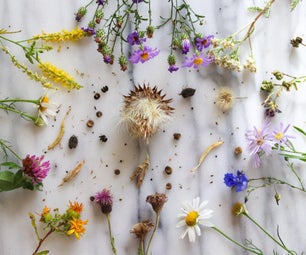Introduction: How to Make a Simple Incubator for Germination
For many people getting seeds to germinate is one of the hardest things to do in the world of gardening.
This simple incubator not only makes germination easy, it provides a springboard into hydroponics as the plant will not have any soil-borne diseases.
This simple incubator not only makes germination easy, it provides a springboard into hydroponics as the plant will not have any soil-borne diseases.
Step 1: Materials and Tools
Materials:
Black plastic (I used Panda Film but this regular is fine)
Foam fruit box
Tape (I used masking tape but duct tape is better)
Small fish tank heater (this can picked up for around $20 AUD)
Perlite
Seedling tray (any kind so long as it fits in the box)
Water
Tools:
Scissors
Black plastic (I used Panda Film but this regular is fine)
Foam fruit box
Tape (I used masking tape but duct tape is better)
Small fish tank heater (this can picked up for around $20 AUD)
Perlite
Seedling tray (any kind so long as it fits in the box)
Water
Tools:
Scissors
Step 2: Line the Box
Line the inside of the box fill it about 3/4 of the way up. with water.
Then tape down the edges.
Then tape down the edges.
Step 3: Set Temperature & Insert Heater
The temperature for germination varies form plant to plant but you can find a good guide to seed germination temperatures here.
For tomatoes we set it to 26 degrees C (78.8 degrees Fahrenheit).
Then place the heater on the bottom of the box with the suction cups facing down.
For tomatoes we set it to 26 degrees C (78.8 degrees Fahrenheit).
Then place the heater on the bottom of the box with the suction cups facing down.
Step 4: Second Skin
Place a second piece of plastic into the box so it is just touching the top of the water. Then tape the edges down.
Step 5: Put in the Tray
Place the seedling tray into the box then fill each compartment with the Perlite.
WARNING: Perlite is made of silica, DO NOT breath in the dust!
WARNING: Perlite is made of silica, DO NOT breath in the dust!
Step 6: Plant the Seeds
Plant one (1) seed into each of the tray's compartments and then turn on the heater. To keep the heat in place a small sheet of black plastic over the top. Once the seeds have sprouted this is not necessary. All that is left to do is wait until the plants are big enough to transfer into either a hydroponics setup or a regular soil garden patch.
That's all for now,
Moderator
That's all for now,
Moderator
Participated in the
Get in the Garden Contest











